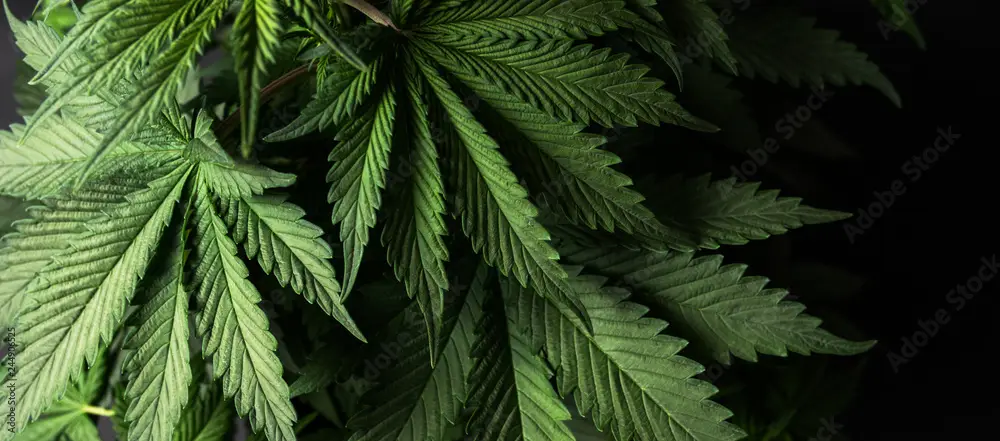Rolling papers serve as the go-to for many smokers who roll their own cigarettes or joints. But what if you find yourself without them? No need to panic! There are plenty of creative alternatives you can use when you’re in a pinch. From everyday household items to natural materials, the possibilities might surprise you.
In this blog post, we’ll delve into these unexpected substitutes, perfect for situations where rolling papers are nowhere to be found. Whether you’re out in the wilderness, partying with friends, or simply forgot to stock up on rolling papers, these inventive solutions have got you covered. Let’s explore the unconventional options to tackle your rolling paper dilemma.
What are Rolling Papers?
Rolling papers are slender, delicate sheets primarily crafted from paper, though some varieties incorporate materials like rice or hemp. They serve as the casing for tobacco, Cannabis, or other herbs, offering smokers a customizable experience.
.jpeg)
Available in an array of sizes, materials, and flavors, rolling papers cater to diverse preferences, allowing enthusiasts to tailor their smoking rituals. They are indispensable for those who relish the art of hand-rolling cigarettes or joints, providing a portable and convenient means to indulge in smoking without relying on pre-rolled options. From everyday household items to natural materials, what can you use as rolling paper?
8 Rolling Paper Alternatives
Rolling papers are a key component for those who enjoy smoking certain substances. However, in a pinch or in situations where rolling papers are not readily available, what can you use as rolling paper? Here are a few alternatives to consider:
1. Homemade rolling papers: If you’re feeling crafty, you can create your own rolling papers using materials like corn husks, certain types of leaves (such as banana leaves or rose petals), or even thin, edible paper. Simply ensure that whatever material you choose is clean, dry, and free from any harmful substances.
2. Pages from a book or magazine: While this might not be the most conventional method, in a bind, tearing out a page from a book or magazine can serve as a makeshift rolling paper. Opt for pages that are thin and free from heavy ink or glossy coatings, as these can produce undesirable tastes and odors when burned.
3. Tobacco or herbal wraps: Some people use tobacco or herbal wraps, which are typically used for rolling cigars or blunts, as an alternative to traditional rolling papers. These wraps are usually made from tobacco leaves or other plant materials and are available in various flavors and sizes.
4. Receipt paper: The thin, white paper commonly used for printing receipts at stores and restaurants can also be used as a substitute for rolling papers. However, it’s important to note that this paper may contain chemicals or coatings that could be harmful when burned, so it’s best to use it sparingly and only when other options are unavailable.
5. Corn husks: Corn husks have been used for centuries in certain cultures as a natural wrapping for smoking materials. They are readily available, biodegradable, and can provide a unique flavor to your smoking experience. However, they require a bit of preparation, such as soaking them in water to make them pliable before use.
6. Empty tea bags: If you have empty, unused tea bags lying around, you can carefully open them up, empty out the contents, and use the paper to roll your smoking material. Just be sure to thoroughly clean out any residual tea leaves to avoid altering the flavor of what you’re smoking.
7. Fruit or vegetable skins: In a creative twist, some people use thin slices of fruits or vegetables, such as apple skins or zucchini slices, as a natural and flavorful alternative to rolling papers. Simply remove the inner flesh and use the skin as a wrap for your smoking material.
8. Aluminum foil (not recommended): While aluminum foil is sometimes used as a last resort for rolling smoking materials, it’s not the safest option. When heated, aluminum foil can release harmful chemicals that may pose health risks. If you choose to use aluminum foil, exercise caution and avoid inhaling any fumes that may be produced during the smoking process.
For a deeper dive into the differences between joints and blunts, check out our detailed comparison on joints vs. blunts.
How to Use Rolling Paper Alternatives?
When it comes to rolling paper alternatives, there are various methods and materials you can use. Here’s a guide on preparation techniques and rolling methods:
Preparation Techniques:
Step 1. Selecting Suitable Alternatives: Look for materials that are thin, pliable, and safe to smoke. Common alternatives include corn husks, dried banana leaves, hemp wraps, or even certain types of edible paper.
Step 2. Preparing the Material: If you’re using natural materials like corn husks or banana leaves, ensure they are clean and dry. Trim them into rectangular shapes roughly the size of a rolling paper. For edible paper, ensure it’s fresh and doesn’t have any moisture.
Step 3. Drying: If the alternative material is too moist, it may be challenging to roll. You can dry it out by leaving it in a warm, dry place for a short period, but be careful not to make it too brittle.
Step 4. Optional Flavoring: Some alternatives, like flavored edible papers or hemp wraps, come with added flavors. If you prefer, you can infuse your chosen material with a flavor of your choice before rolling.
Rolling Methods:
Step 1. Classic Hand Rolling: This method involves placing the material flat on a clean surface, adding the desired amount of herbs or tobacco, and then rolling it up tightly between your fingers. Seal the edge with a lick or by applying a bit of moisture.
Step 2. Machine Rolling: If you have a rolling machine designed for traditional rolling papers, you can often use it with alternatives as well. Simply place the material in the machine, add your smoking substance, and roll it through.
Step 3. Twisting or Folding: For more pliable materials like banana leaves or certain edible papers, you may opt for a twisting or folding method instead of a traditional roll. Fold the material around the smoking substance and twist the ends to secure it.
Step 4. Experimentation: Different materials may require different rolling techniques. Don’t be afraid to experiment with folding styles, cutting methods, or even using multiple layers of the alternative material for added strength.
Step 5. Practice Makes Perfect: Rolling with alternative materials may take some practice to get right. Be patient and don’t get discouraged if your first few attempts aren’t perfect.
Safety and Considerations of using Rolling Paper Alternatives
Here’s a breakdown of the safety considerations and environmental impacts of using rolling paper alternatives:
Health Concerns:
1. Chemical Composition: Traditional rolling papers are typically made from wood pulp, hemp, or rice paper. However, some rolling paper alternatives may contain additional chemicals or additives for flavor or texture. These chemicals could pose health risks when burned and inhaled.
2. Combustion Byproducts: When any material is burned, it can produce harmful byproducts such as tar, carbon monoxide, and other toxins. The composition of the rolling paper alternative can influence the type and amount of these byproducts produced.
3. Allergies and Sensitivities: Some individuals may be allergic or sensitive to certain materials used in rolling paper alternatives, leading to respiratory issues or skin reactions.
Environmental Impact:
1. Sustainability: Traditional rolling papers made from wood pulp can contribute to deforestation if not sourced sustainably. Alternatives like hemp or recycled paper can be more environmentally friendly options.
2. Biodegradability: Some rolling paper alternatives are more biodegradable than others. Biodegradable materials break down more easily in the environment, reducing long-term waste.
3. Packaging: Consider the packaging of the rolling paper alternative. Excessive packaging or non-recyclable packaging can add to environmental concerns.
4. Carbon Footprint: The production process of rolling paper alternatives, including transportation and energy use, can contribute to greenhouse gas emissions. Choosing locally sourced or low-impact production methods can help mitigate this impact.
Additionally, if you’re looking for ways to enhance your smoking sessions, check out our article on How to Get Higher When Smoking Weed.
Conclusion
In conclusion, when you find yourself without traditional rolling papers, there’s no need to fret. A plethora of alternatives exists, ranging from household items to natural materials, offering inventive solutions to your rolling paper dilemma. Whether you’re in the great outdoors, at a social gathering, or simply forgot to restock your supplies, these creative substitutes can save the day.
However, it’s crucial to consider safety and environmental factors when using alternatives. Some materials may contain chemicals or produce harmful byproducts when burned, while others may have sustainability implications. Therefore, it’s essential to choose wisely and be mindful of the potential health and environmental impacts.
When it comes to enjoying your smoking experience with cannabis, consider exploring products from Herbwell Cannabis Company. We are renowned for our commitment to quality and innovation in the cannabis industry. From premium strains to innovative consumption methods, We offer a wide range of products tailored to enhance your cannabis experience. So, next time you’re in need of quality cannabis products, trust Herbwell to deliver excellence every time.




